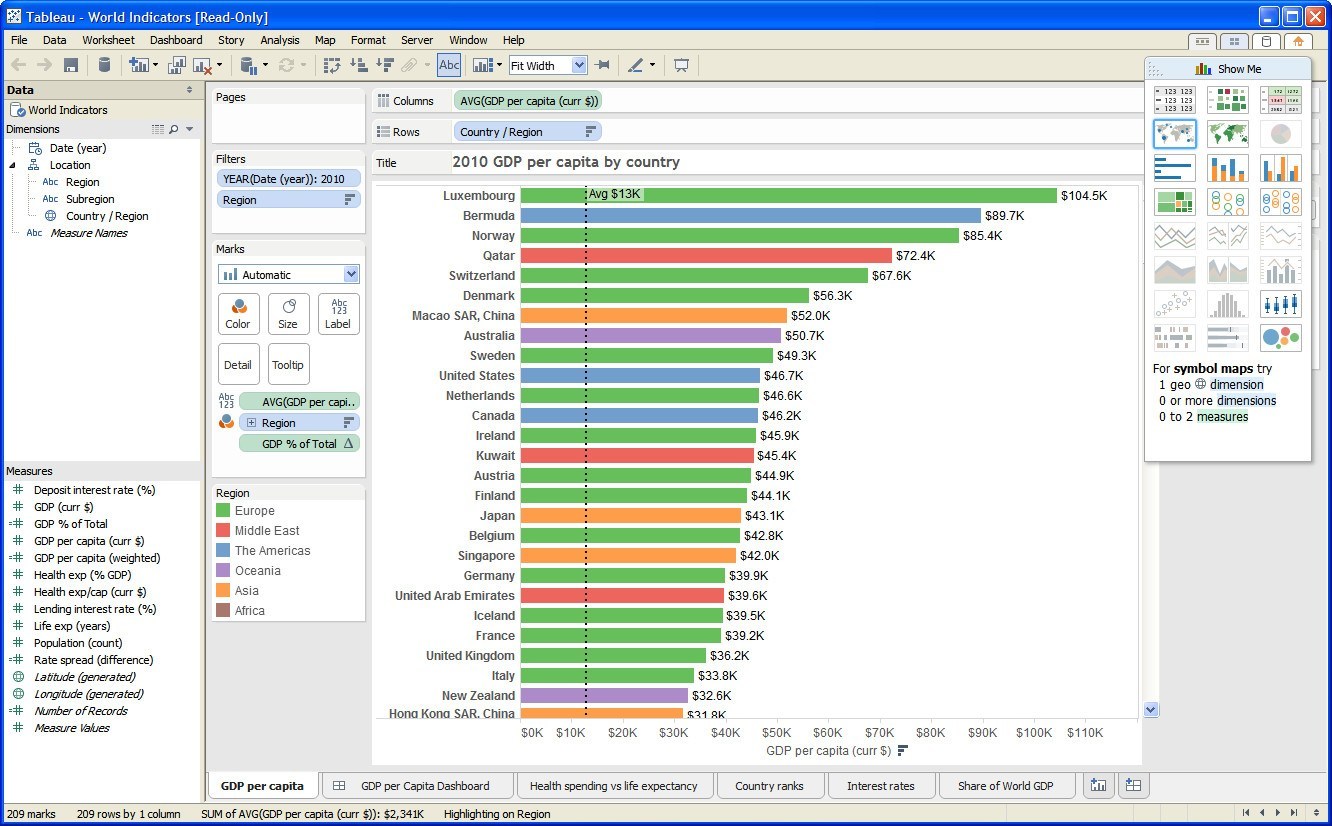

On a dashboard and that the dashboard tab is selected. However, with 2020.3, I'll be able to allow this with just a click of a button! So how does it work? It's simple.
Tableau desktop 2020.3 how to#
In the past, I utilized what Andy Kriebel referred to as the Greatest Tableau Tip Ever (and I agree, it's a really good one), where he showed how to use a bit of trickery to allow the download of a table. That said, it is very common that I allow users to download tables into CSV files. I love the ability to download to image, PDF, or PowerPoint, but I don't use that functionality very often. In version 2020.3, they added the option to download to a Crosstab. To export to an image, PDF, or PowerPoint. Tableau introduced the ability to add a button to the dashboard to allow users Impact on when Fixed LODs are calculated as they will calculate after the Understand how it affects other parts of our workbook through the Tableau Order Since we are required to add this filter to context, we must be careful to

Small feature, but it will make a world of difference when we consider the user The Category Context filter will filter the values within the set control as Will see that currently, it is set to All Values in Database. Version 2020.3 using the same example from above. Related to Office Supplies and Technology are filtered out of the bar chart,īut those values remain in the Set Control, which can be quite confusing.Ĭontrol what is shown in the set control using context filters and the general equivalent Version 2020.2 or earlier, let’s add Category as a filter to this view and set The Set Control (aside from some trickery from Filippos Lymperopoulos – check it out here). On Rows and Sales on Columns to build a bar chart.Ģ020.2 and earlier, there was no way to control the values that were shown in Speaking about the filter-like menu and not the major improvements to the set We get into the improvements in 2020.3, let’s take a quick look at how set List, similar to a filter, to add or remove items to and from the set. It allows users to interact with a checkbox Operator will be very powerful and I can’t wait to use it.įeature that was released just a few months back in 2020.2. This would be a very long case statement (or joining up to another table We could create a Region field using the IN Let’sĪssume that Region was not an included field in the Superstore data set. With all other states being marked as Outside of Tri-State.ĭoesn’t have to be used in an IF statement, it can be used in many other placesĪs well, including CASE statements. The State is Kentucky, Indiana, or Ohio, it will be marked as Within Tri-State Operator within an IF statement to break states into these two categories: Sales figures and I am interested in how my local tri-state area compares to Let’s assume I am looking at United States Let’s take a look at a simple use case for it. Within SQL and just as powerful within Tableau. Set down to just records in Kentucky, Indiana and Ohio. ForĮxample, below the IN operator is used within a WHERE clause to trim the data Operator is most commonly used in a WHERE clause to trim you’re your data set Questions in the past several years as to why Tableau doesn’t have an IN User, you are probably very familiar with the IN operator and you probably use You to four of them: the IN Operator, Relevant Values for Set Controls, Export to Crosstab Button, Write to Database in Tableau Prep, and myĪbsolute favorite, Clearing Parameter Actions. In this blog post, I am going to introduce 2020.3 was just released and it is packed with awesome new features.


 0 kommentar(er)
0 kommentar(er)
